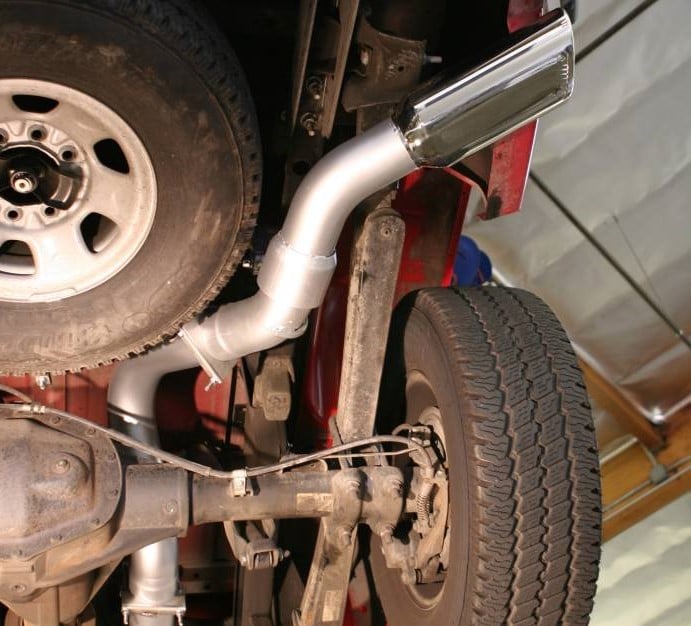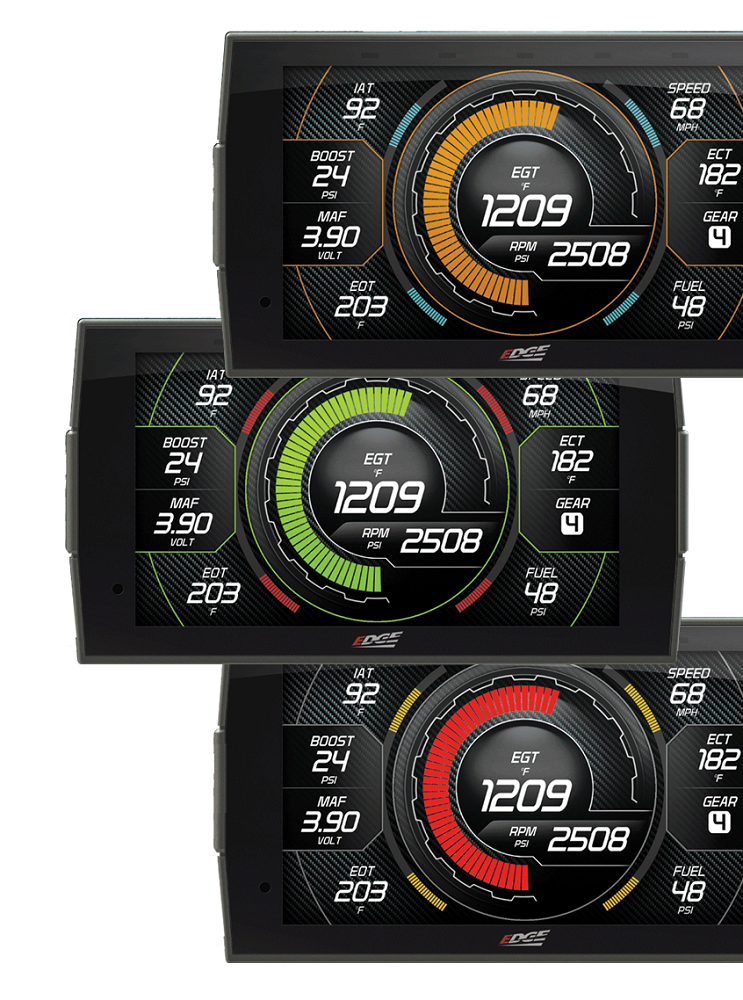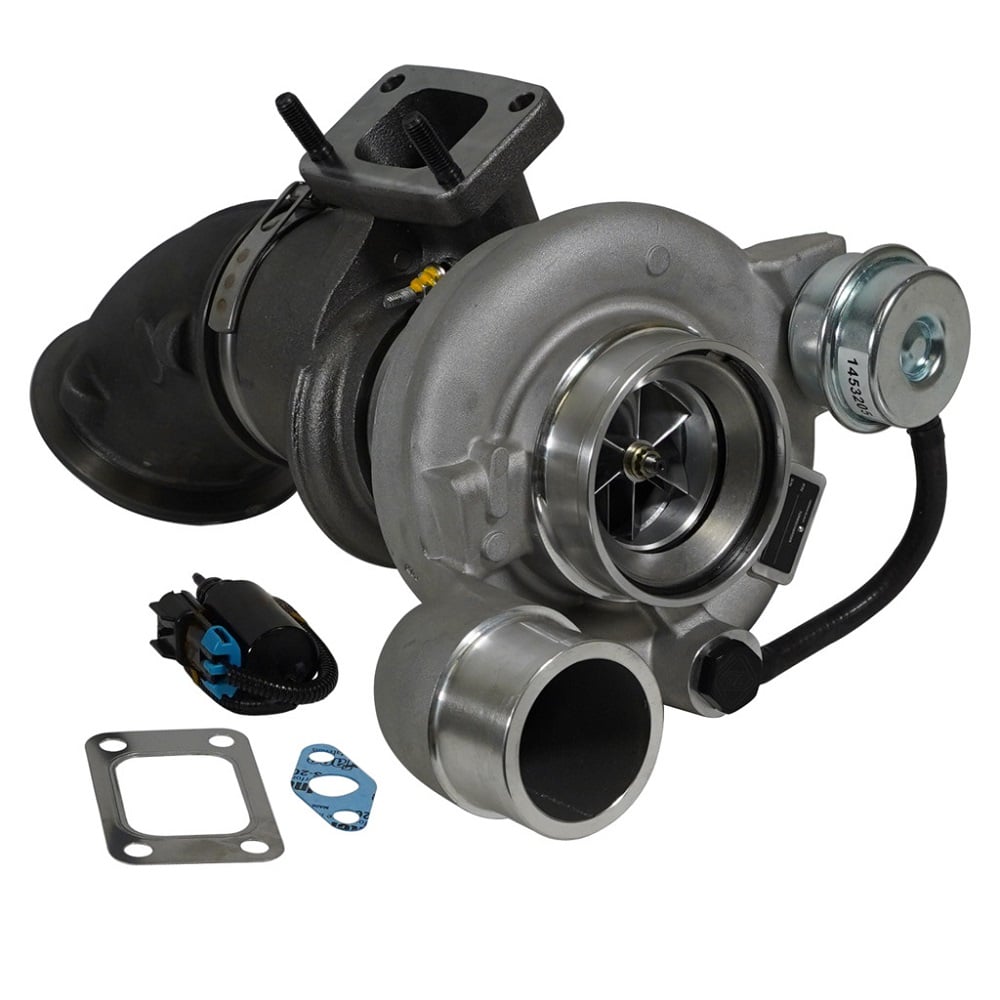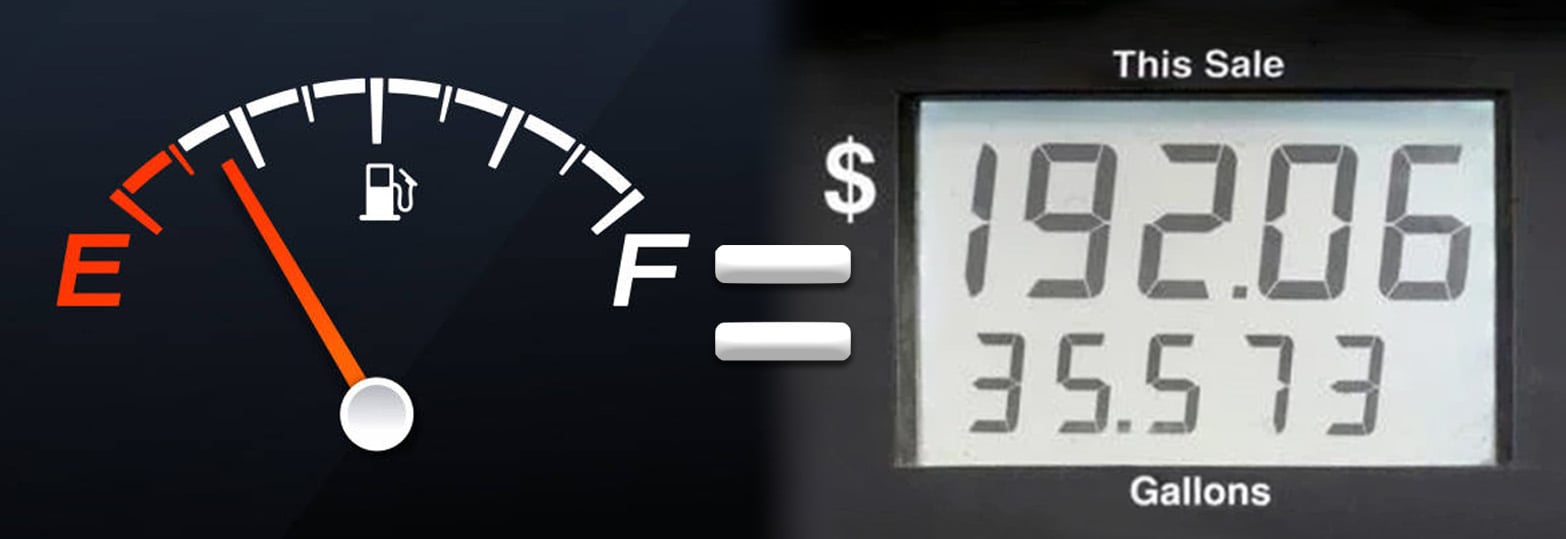Unless you’ve been camping in a cave with no cell phone data for the last 6 months, you’re well aware of the rising fuel costs that we’ve seen across the globe. At the time of writing, the national average for one gallon of diesel fuel is $5.62 per gallon, which is a whopping $2.36 MORE per gallon than one year ago. For the average diesel truck, this means it will cost around $200 to fill the tank if it’s empty, and after doing that a few times, you can’t help but wonder if there are any changes or modifications you can make to your truck to help it go farther on each tank of diesel.
The good news is, there are a few tweaks you can do that will actually help you get better MPG from your diesel pickup truck, but the bad news is, you’ll never get the same fuel mileage as a hybrid. Most modern diesel trucks weigh well over 7,000lbs and can get close to 20mpg in ideal conditions, but most of us have a few extra pounds of tools, equipment, and gear that we are constantly hauling around since we use our trucks for work. That being said, some mileage gains can be had if you know where to look.
Incredible Mileage Gains
As annoying as this may be to hear, your driving habits will have the biggest impact on fuel mileage gains or losses. Where I live, the speed limit on the highway is 80mph, but drivers regularly exceed that. While any diesel truck is fully capable of keeping up with the flow of traffic, you can watch your fuel mileage rapidly drop the faster you drive, especially if its uphill. So, if you really want to slow down the fuel gauge as it drops, you need to slow down your truck. According to the Alternative Fuels Data Center, reducing your speed 5 to 10 mph can improve fuel economy 7 to 14 percent. It should also go without saying that your driving habits in town will also affect your mileage. I enjoy hearing those cool turbo noises as much as the next guy, but every time you accelerate hard, you do waste fuel. So, take it easy on the skinny pedal to save a few bucks.

Cold Air Intakes Really Work
When searching for modifications that can improve fuel mileage, you will find there are a lot of products that make absurd claims for incredible mileage. If it sounds too good to be true, more than likely it is. We’ve all seen the magnets that claim to break up fuel particles for more efficient combustion and DIY hydrogen generators that promise 100 MPG from water, but if you actually understand the science of what these products claim, you’ll quickly realize there is no magic bullet that will quadruple your fuel mileage. However, some modifications do exist that will actually save you fuel in real world conditions.
If you can let more air into and out of the engine with less restriction, you will do three basic things: increase horsepower, lower exhaust gas temperature, and improve fuel economy. The most popular way to start this process is with a cold air intake system, which includes a less restrictive air filter, a higher flowing intake tube that will let more air into the turbocharger, and a heat shield that allows the system to draw in cool outside air rather than warm engine bay heat. Two brands that jump to the top of the list for a cold air intake are S&B and Banks Power. Each has been specifically designed for your vehicle, both will improve power and economy, and both offer their intake system with a choice of an oiled or dry filter. Oiled filters are nice because they are cleanable and reusable and will last the lifetime of the truck if properly maintained, but you have to be careful when cleaning your air filter. A small amount of filter oil must be applied after cleaning to help with the filtration process, but if you over oil the filter, it can damage your mass airflow sensor. If you prefer not to mess with cleaning, a dry filter can simply be replaced when it gets dirty, but either option you choose will have the same benefits of increased fuel mileage and performance.
Exhaust Gains Where You Wouldn’t Expect
The final side of the airflow equation is the exhaust system, and if you can reduce or eliminate backpressure here, it will allow the engine to operate more efficiently which once again will improve horsepower and increase fuel economy all at the same time. If you have an older truck without any emission components in the exhaust, you can replace the entire system from the turbo to tail pipe with a larger diameter free-flowing exhaust. Many people believe that on newer emission equipped trucks you will see no gains from installing a filter-back exhaust, but the data shows otherwise. Extensive testing on an L5P Duramax shows the inlet of the DPF can reach up to 4.19 PSI of back pressure, 1.17 PSI after the DPF, and 1.00 PSI at the stock exhaust nozzle. By simply replacing the exhaust system from the DPF back with a Banks 5” Monster Exhaust, you can reduce backpressure in every upstream point in the exhaust, all the way to the cylinder head. DPF inlet pressure drops to 3.10 PSI, and DPF outlet pressure actually drops to a vacuum at -0.03 PSI and the pressure at the exhaust nozzle drops to an even greater vacuum of -0.10 PSI. In the real world, this means an increase in horsepower and our very favorite benefit, more fuel economy which is impressive considering a filter back exhaust is an upgrade many people write off.

Fuel Additives
My favorite modifications have multiple benefits, and a fuel additive will do several things for you, and at the top of the list is increase fuel mileage. A small amount of F-Bomb Diesel Fuel Additive gets poured into your tank each time you fuel up, and it only costs about THREE CENTS to treat each gallon of fuel, but you get huge results. With F-Bomb in the tank, you will get better fuel mileage, but also increased horsepower, a boost in cetane rating, a cleaner fuel system, improved lubricity, and a reduction of emissions, plus it also helps prevent formation of algae in your tank.
Other fluids in your truck can also help with fuel efficiency as well, and they can do that by reducing friction. Every mechanical system on your truck uses lubrication in one form or another to allow metal parts to move and turn without damaging themselves, and this holds true from the simplest wheel bearings to the most complicated transmission. By replacing your existing fluid with a high-quality full synthetic lubricant, you gain several benefits like longer service intervals, cooler running components, and better lubrication in general, but of course one main benefit of a full synthetic fluid is how they can reduce friction which makes mechanical components easier to turn, which of course means better fuel mileage.
Synthetic Oil: Worth the Switch?
I wouldn’t suggest you go out and change every fluid on your truck all at once in the name of saving fuel, but as each drivetrain component is ready to be serviced, simply replace the fluid that comes out with synthetic. Since your engine oil needs to be changed the most frequently, I’d start by grabbing some Schaeffer’s OTR Plus 5w-40. It’s a premium engine oil that can run up to 9,000 miles or more between changes, and by running a 5w instead of a traditional 15w, you will get improved cold oil flow, which means better lubrication when the engine is not up to temperature, but since it’s still a 40 weight, it works perfectly when it’s up to operating temperature.
For your transmission and differential, the same benefits of a synthetic fluid apply as well. Whenever it’s time for a fluid change, simply drain the existing oil and pour in some Schaeffer’s All Trans Supreme or Supreme Gear Lube into the transmission and differentials. Of course, with the transmission, make sure to change your filter as well (both the internal and external if equipped) and consider stepping up to a premium filter like the PPE Double Deep to ensure your new fluid stays clean for the duration of its life.
Chips, Tuners, and Programmers

One of the main ways to improve fuel economy further on a diesel is to change the programming inside your engine computer with a tuner like the Edge Evolution CTS3. It’s a multi-function device that can act as a gauge monitor, but also add a healthy shot of horsepower and boost fuel economy all at the same time. It accomplishes this by altering operating parameters like injection timing, fuel pressure, and turbo boost, all in the name of creating more efficient combustion. While more power and less fuel consumption may sound like opposite ends of the spectrum, achieving both is possible because you are maximizing the amount of energy your engine can extract from every last gallon of fuel.
Mods That Can Hurt Mileage?
Most of the time we aren’t thinking about fuel consumption when we build or modify our trucks. Instead, we have a particular style or function we’re after, and the changes we make are focused on meeting those specific goals of utility. For example, many diesel truck owners need to have a more aggressive tire tread for working on a jobsite, driving in the woods, or hauling hay through a field, and factory style tires simply won’t work. While you do need to pick your tires to work on your truck, choosing a too aggressive tire tread or size can hurt fuel mileage a little. My advice would be to choose the tire style that meets your needs and be realistic about how you use your truck. If you spend 85% of the time on the highway and rarely go further off road than parking on the lawn, perhaps a mud terrain tire isn’t the best bet, and an all-terrain tire would be a better choice if maximum MPG is a concern. Also consider tire pressure. If you lower the air pressure in your mud terrains for greater traction in the sand or to get a smoother ride from your E or F load range tires, the extra drag created from running a too low pressure on the street will burn extra fuel and wear out the rubber quicker, so make sure your tires are properly inflated for the longest life and best mileage.
Everyone loves a truck with a killer set of wheels on it, and a wider stance does look cool, but did you know the further your tires stick out of the body of your truck the more fuel you will burn? It all comes down to aerodynamic drag, and if the tire is inside the body of the truck, air will be allowed to easily pass over, rather than being forced up and over the tread. Manufacturers make wheels in a variety of offsets, so instead of choosing a 14” wide -76 wheel, a 10” wide -24 offset will look just as good but can tuck the tires under the fender reducing drag.

Speaking of drag and aerodynamics, accessories mounted to the roof or above the bed of the truck can kill fuel mileage. While towing a 5th wheel camper, many owners will mount a cargo pod on the roof of their truck to gain back a little extra storage lost by the hitch in the bed of the truck. While this is a necessity while towing, if you leave the cargo pod in place year-round, it can cost you. According to the Alternative Fuels Data Center, accessories mounted on top of a vehicle like a roof rack or cargo pod can reduce fuel mileage by 10 to 25% at 75 mph, so make sure they are only installed when you absolutely need them.
The turbocharger you install can greatly impact your fuel mileage for better or worse. All too often, I have seen truck owners pick out the biggest turbo they can afford with aspirations of making four-digit power numbers, only to realize after the fact they chose wrong. A too-large turbo for your engine (for example an 80mm single on a stock fueled 5.9 Cummins daily driver) will have terrible throttle response and spool up time, and when driving on the highway it will hardly ever get into boost, which means the engine will be running in its least efficient zone. Because there is no added horsepower from the turbo at low engine loads, it needs to burn more fuel and run at a richer air/fuel ratio to simply maintain speed, so pick your turbo size wisely. For best fuel mileage, you ideally want to run the smallest turbo possible that will still support the horsepower needs of your engine, which usually means a stock turbo or drop in upgrade that’s only slightly larger like a BD Screamer. For most diesel engines, a single 63 to 64mm turbo will offer great power potential and not hurt your fuel economy.
Time to Trade-In?
One common argument I see in the news suggests if you don’t like fuel prices, simply buy a more efficient vehicle. While a 55mpg Prius sounds nice on paper, the truth is most diesel truck owners NEED a vehicle that can tow, haul, and move a ton of weight, all things a compact hybrid or electric vehicle simply can’t do. While it may be painful to fuel up a 30+ gallon diesel tank, the payment on a new car won’t be any less, and you still must fill it with fuel or charge the batteries. The best advice I can give is make sure the truck is running optimally, add a few select upgrades along the way, and be smart about how you drive, and the small savings will add up.


Not that I don’t agree 84% but seems to me, it’s a advertising post, when you make a post about mileage, keep brands out and information in
Will a 6.7 or a 7.2 engine. to a 6.4 . In my f 250 09 Ford truck ? ;Any idea what a crate engine would cost ?;
Great article my 07 Lbz is a beast with the right combinations from different manufacturers. I do run an edge cts3 programmer , Sinister hot and cold pipes and a dry air intake from WC Fab. Also MBRP exhaust with a new Allison R-100 built by Jasper racing so the tranny will hold the HP . Love it ! Troy
Several years ago, I installed a tuner, exhaust, and ‘delete’ kit. It really helped me get better mileage! The only thing I did not like about it was that the tuner raised the shift-point between each of the 6 gears by about 10 mph. How much does that reduce mileage? Can you provide me another tune geared more towards fuel economy than simply raw power?
What kind of oil do you recommend for a g56 6 speed manual transmission on a 2008 dodge Ram diesel